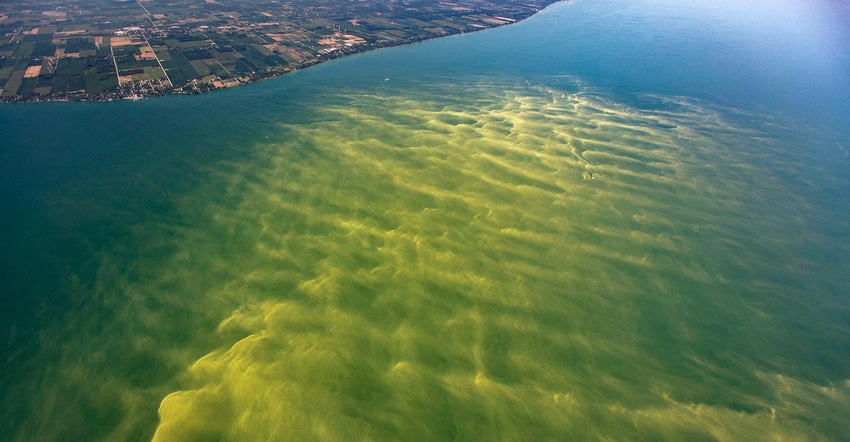February 13, 2020

Although corn or soybeans could not be planted on 1.6 million acres of Ohio farmland last year, and little to no fertilizer was applied to those fields, the amount of phosphorus entering Lake Erie still was high.
That might seem odd. After all, many of those unplanted acres were in northwest Ohio, the region that feeds into the Maumee River, and ultimately into Lake Erie.
But a lot of phosphorus was already present in fields from fertilizer applied years before, and older phosphorus is another contributor to the level of phosphorus in Lake Erie, says Greg LaBarge, an Ohio State University Extension field specialist.
Phosphorus runoff from farm fields is a main cause of the harmful algal blooms plaguing the lake.
“Phosphorus was already in fields, ditches, rivers and tributaries, and it just moved downstream,” he says.
The rain added momentum. 2019 was the sixth-wettest year on record in Ohio, which increased the chances that phosphorus, an ingredient in fertilizers and manure, would travel downstream with the rainwater, says LaBarge, an agronomist involved in a statewide phosphorus water quality monitoring effort.
Given how much rain the state received last year, particularly in northwest Ohio, the predictions for the summer phosphorus levels in Lake Erie were even higher than they turned out to be.
The trend toward more and more rain is expected to continue.
For the state to significantly reduce the phosphorus levels in Lake Erie, a lot more needs to be done besides changing the methods and amounts of fertilizer farmers apply each year to their fields, he says.
Conservation Tillage and Technology Conference
LaBarge is among 65 presenters at the Conservation Tillage and Technology Conference, an annual event sponsored in part by OSU Extension that is set for March 3-4 at Ohio Northern University in Ada.
LaBarge’s talk, “What Did We Learn from the 2019 Ag Production Year and Lake Erie Harmful Algal Blooms?” will be given with Laura Johnson, director of the National Center for Water Quality Research at Heidelberg University.
“We can’t significantly reduce the phosphorus levels in Lake Erie by only changing farming practices done each year,” LaBarge says. “We need to look at other things.”
Specifically, he is referring to improving water drainage systems on fields; more planting of cover crops to increase the soil organic matter and the soil’s ability to retain more water; and installation of phosphorus filters placed underground on fields to strip out P passing through them.
The fact that little to no fertilizer was likely applied to 1.6 million acres in Ohio last year likely made a difference to the phosphorus load entering Lake Erie, Johnson says.
Last year, the severity of the Lake Erie harmful algal bloom was 7.3 on the severity index — more than double the severity level of the bloom in 2018 but less than the bloom of 10.5 in 2015.
“How much fertilizer farmers place on their fields, and how they apply that fertilizer between the fall and spring of any crop year, have a pretty big influence on phosphorus loads in the spring and summer,” says Johnson, who did an analysis last year of P loads in the Maumee River.
“There’s also a substantial amount of phosphorus leaving fields that was applied years before. It will take time and patience to achieve the reductions in phosphorus that we need to reduce the severity of the annual algal bloom.”
Ohio Gov. Mike DeWine recently approved funding cost-share programs that help farmers pay for a range of tactics considered to reduce phosphorus runoff, from applying fertilizer below the surface of the soil, to modifying drainage ditches to slow water flow and allow the phosphorus to settle.
If trying some of these approaches leads farmers to saving money, buying less fertilizer, or earning more from higher yields, farmers will likely adopt them, LaBarge says.
“The practices have to bring about some economic advantage for farmers to have widespread adoption of those practices,” he says.
Early registration for the upcoming tillage conference runs until Feb. 21 and costs $70 for one day or $95 for both days. Registration after Feb. 21 is $85 for one day or $115 for both days. For more information, visit ctc.osu.edu.
DeMartini writes for Ohio State University Extension.
Source: OSUE, which is solely responsible for the information provided and is wholly owned by the source. Informa Business Media and all its subsidiaries are not responsible for any of the content contained in this information asset.
You May Also Like




